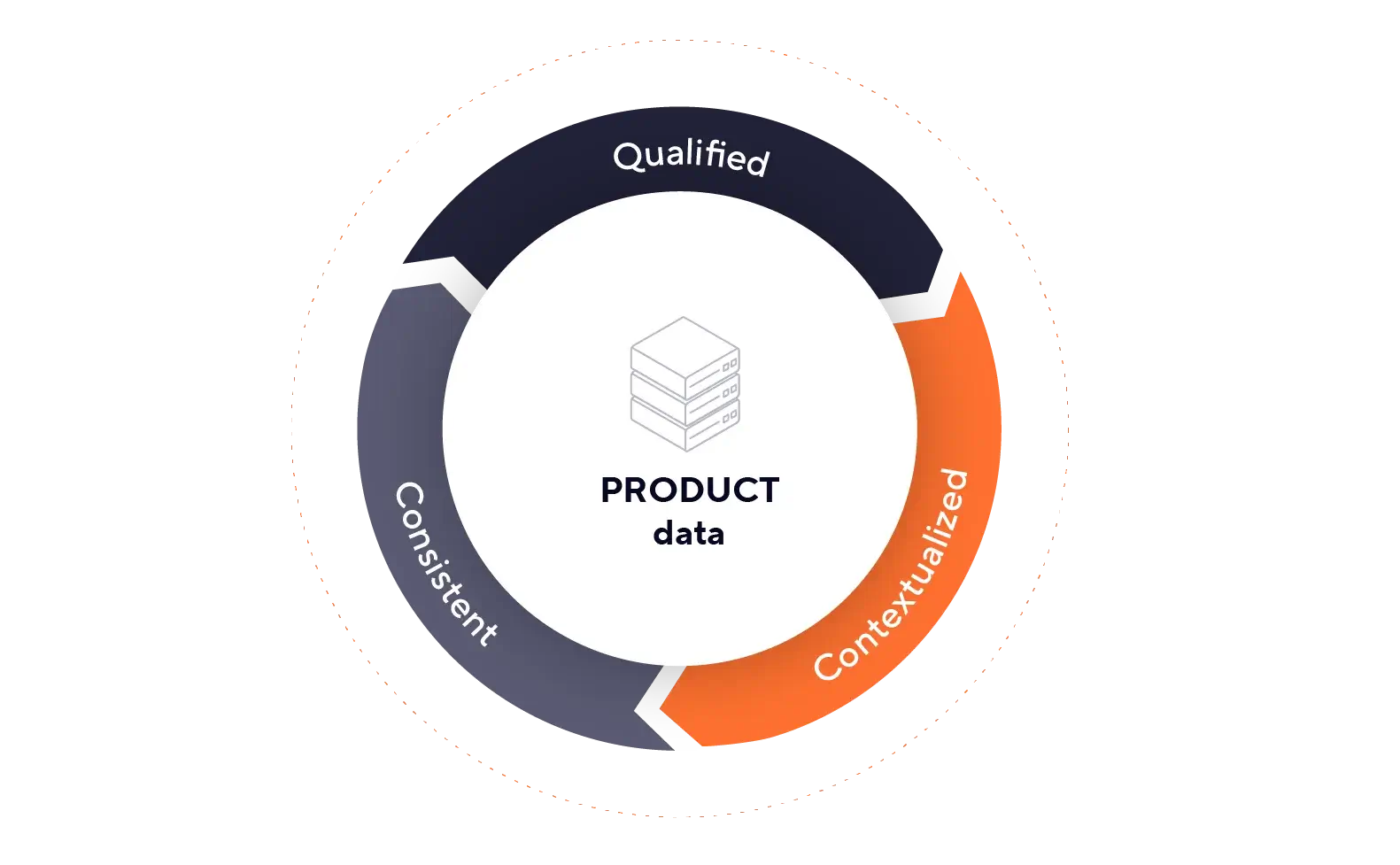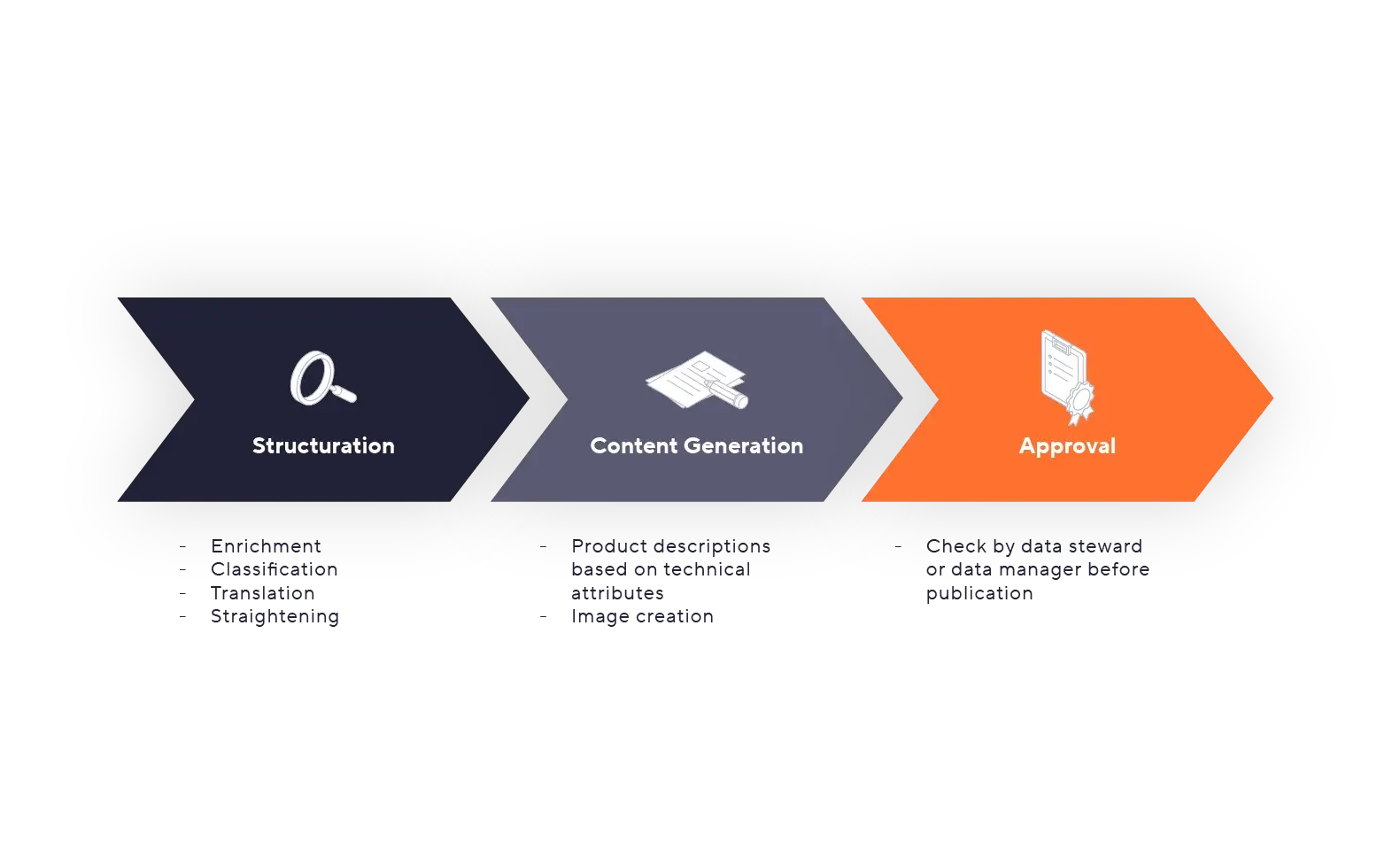AI serving product experience

…and thus, supporting product data, which is often stored, qualified, and contextualized within a Product Data Repository like a PIM before being distributed across various channels (stores, e-commerce sites, apps) or broadcasted (print catalogs, displays…).

AI, through third-party solutions, specific developments, or direct PIM integration, plays a key role in structuring data. It enables the enrichment, classification, translation, and refinement of product data.
Concrete examples of AI applications:
At “Foussier“, a national distributor of leading building hardware, power tools, and PPE brands for building finishing, a ChatGPT-based tool was implemented to structure data extracted from sparse supplier files, followed by marketing enrichment using product data from manufacturers, scraped from the web.
The expected benefits included improved product data quality and real-time control over imported data.
Another use case, presented at the HubForum, involved “Cdiscount” to enhance product listing categorization. By 2022, Cdiscount’s Data Science team had already developed algorithms leveraging vast data volumes: visitor numbers (+16 million) and product numbers (+80 million). With the advent of generative AI, Cdiscount’s DATA team accelerated the categorization process, handling 14 million product listings out of 35 million submitted to the system. The business impact was immediate, with a 30% increase in conversions on products that benefited from enhanced categorization, thanks to improved information quality.
Another example involved a Proof of Concept (POC) with a DAM system to identify and sort images from zip files and organize them into folders and subfolders. This effort sorted 3,300 images with an accuracy rate of 92-95%. AI tools from Google, such as Google Lab, Keras, and TensorFlow, were used to complete this POC on a fashion image database, with a keyword configuration file established for search functionality and the creation of directories and subdirectories to organize the data.

DATASOLUTION’s PIM/MDM clients generally use AI in two phases :
- Data structuring and enrichment (including translation): AI tools, such as those offered by Akeneo, enhance data quality with spelling optimization, standardization, and more.
- Content generation (short/long descriptions, images, tags…): This step creates content from the structured data
In both cases, ethical considerations and brand image control require a final manual validation before publication (and sometimes between the two phases, with a validation of “technical” content before pre-generation). These roles are managed by data stewards or data managers before publication.
If this topic interests you, it’s part of a series of three articles we’ve written for you:
AI for an improved customer experience
AI for e-commerce
Do you need advice on integrating AI into your product data management?
Do you have a project or ideas?


